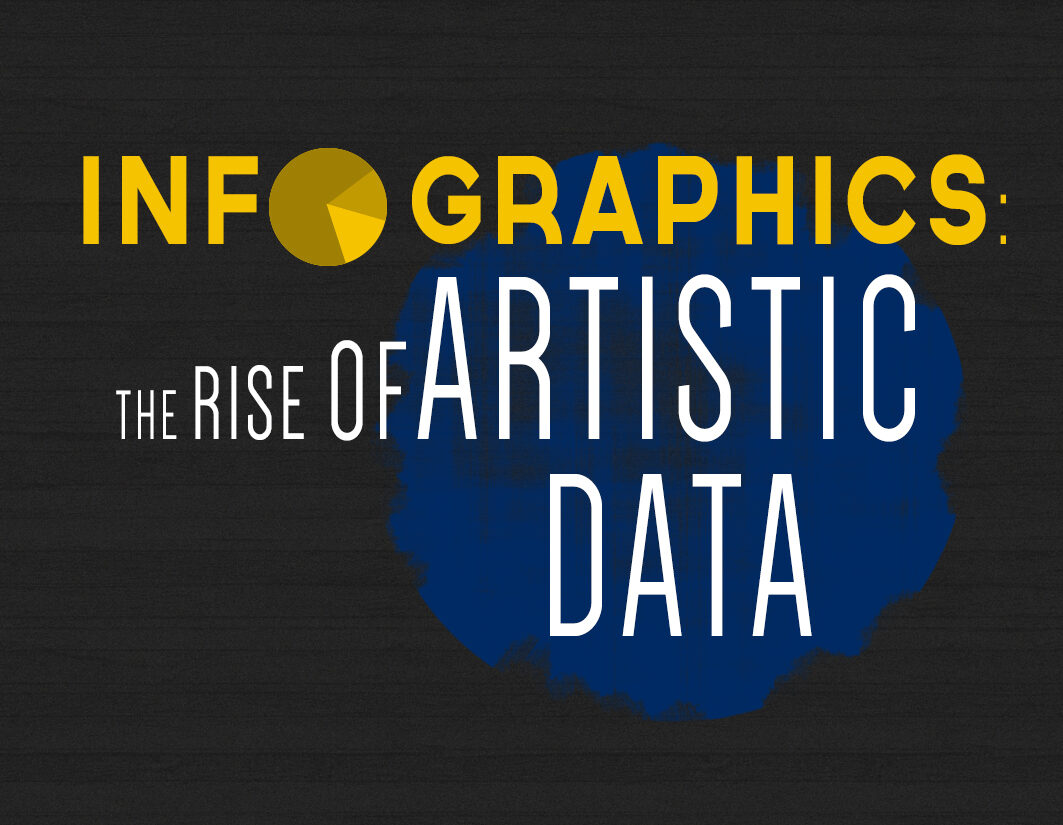Infographics: The Rise of Artistic Data
When most people think of data, the last thing that probably comes to mind is artistic expression. In fact, it may be hard to imagine how someone can make seemingly “boring” statistics fun to look at. However if you have been following our social accounts (or if you have opened a magazine recently) you’ve probably come across some creative forms of data presentation. An infographic uses illustrations to present data in a way that is visually appealing and easy to understand. They aim to put an end to the lackluster bar graphs and pie charts that we’ve all become accustomed to since grade school. Used in a number of ways, they are ideal for anything from presenting statistics to raising awareness for a cause.
As a recently hired graphic design intern here at #UMSocial, I have spent my first few weeks inadvertently studying and practicing the art of infographics. From the colors to the clever use of symbols, an infographic essentially makes it easier for the reader to take in the information at first glance. If I have learned one thing, it is that each one must be tailored and creatively customized to the content being presented.

When to use an Infographic
Presenting Statistics and Analytics
Far and wide, one of the most common uses of infographics is to present statistics and analytics. It is a tool that is often extremely useful for brands (such as the University of Michigan) who are constantly striving to grow and retain a level of excellence. Whether you’re a university highlighting student statistics or a small business focusing on your role in the community, infographics benefit virtually every market. They not only work as public content but also serve a very important purpose behind the scenes. Infographics can be added into weekly, monthly, or annual reports, making it easier to visualize and improve growth.
Additionally, and perhaps most importantly, analytic infographics can also be used to engage your audience and build your fan base. It is key to know what your fans most identify with in order to craft an infographic to reflect their interests. For example, we recently posted a “mini” infographic on Facebook geared towards “beating OSU” in Facebook followers. By playing off our sports rivalry (something our followers are very passionate about), the post reached fans who had not already “liked” our page. It not only helped achieve the direct goal (within a few hours) but also garnered 9,130 likes and 23,631 shares to date. Adding a graphic element not only gets a message across quickly, but also gives the fans a visual “goal” or idea of the information being presented.

Celebrating Achievements or Making a Change
Many institutions, organizations, and corporations also use infographics to highlight achievements and/or celebrate a public figure. A good example of this would be an infographic geared towards specifically showcasing accomplishments or awards. These graphics integrate well into social platforms and websites for the simple reason that they build brand moral and pride. What better way to boost your brand than highlight its strengths?

What makes a good infographic?
1. First and foremost it’s important to keep things fairly simple. Don’t over complicate it with endless text. Keep your font cohesive and simple to read and have some fun with your title.
2. Use symbols and imagery that relates to what you’re presenting. This goes for your title and content. For example if you’re talking about revenue you can can use numerous dollar signs placed beside each other in place of a bar graph.
3. Pay attention to space management and formatting. If presenting a number of points pertaining to one another simply use lines to link them rather than text. Or if comparing two ideas (or brands), add them into one graphic element (i.e. the heart in the graphic at the top of this post). Ultimately it will be more visually appealing and save you a ton of space and time!
4. Know your audience. This is very important because it will ultimately determine the success or failure of your graphic! You don’t want to present them with data that doesn’t engage thier interest.
5. Get creative, there are very a few rules! The great thing about infographics is that no two should be the exact same. Create custom illustrations, shapes, and don’t be afraid to use color!
Need some inspiration? Check out this great example from the web:

To conclude here are the top reasons to integrate infographics into your brand:
-
They get your message across quickly while adding a visual element to your page.
-
Infographics help organize information efficiently, saving you time.
-
Gives fans an idea of where you stand as a brand.
- They can lead to big results! Whether it’s raising money for a cause or gaining followers.
This post was contributed by Ahmed Ghani: Graphic Design Intern and Film Major – @amesghani




